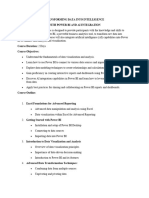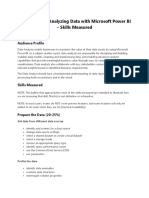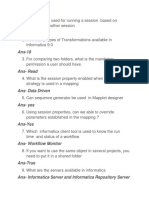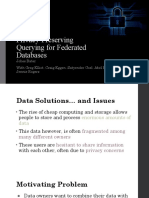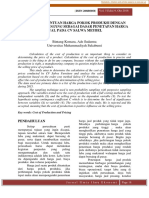0% found this document useful (0 votes)
15 views22 pages(DA4.1) Data Analytics Job Ready Program
The document outlines a comprehensive course curriculum for a Data Analytics Job Ready Program offered by Datiction in Dhaka, Bangladesh. It includes modules on Excel, Power BI, SQL, and Python, covering topics like data manipulation, visualization techniques, and advanced analytics. Each module features classes with specific learning objectives, practical projects, and evaluation criteria to assess student performance.
Uploaded by
papiyaakter338Copyright
© © All Rights Reserved
We take content rights seriously. If you suspect this is your content, claim it here.
Available Formats
Download as PDF, TXT or read online on Scribd
0% found this document useful (0 votes)
15 views22 pages(DA4.1) Data Analytics Job Ready Program
The document outlines a comprehensive course curriculum for a Data Analytics Job Ready Program offered by Datiction in Dhaka, Bangladesh. It includes modules on Excel, Power BI, SQL, and Python, covering topics like data manipulation, visualization techniques, and advanced analytics. Each module features classes with specific learning objectives, practical projects, and evaluation criteria to assess student performance.
Uploaded by
papiyaakter338Copyright
© © All Rights Reserved
We take content rights seriously. If you suspect this is your content, claim it here.
Available Formats
Download as PDF, TXT or read online on Scribd
/ 22






































